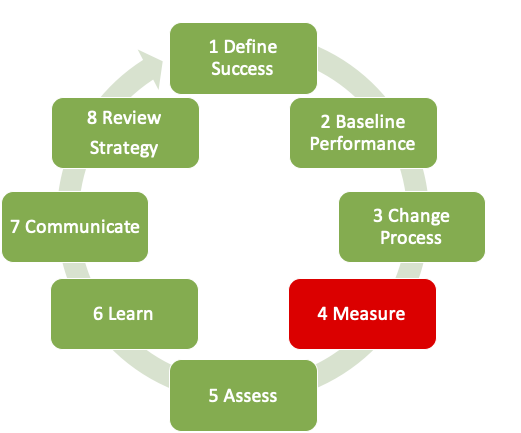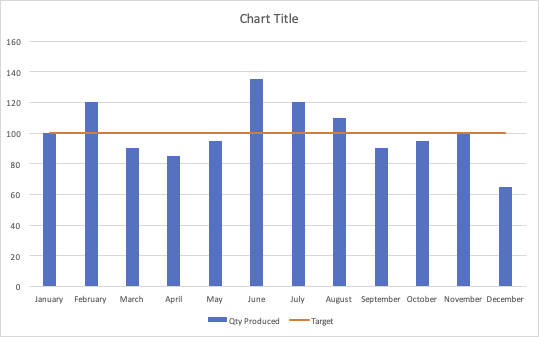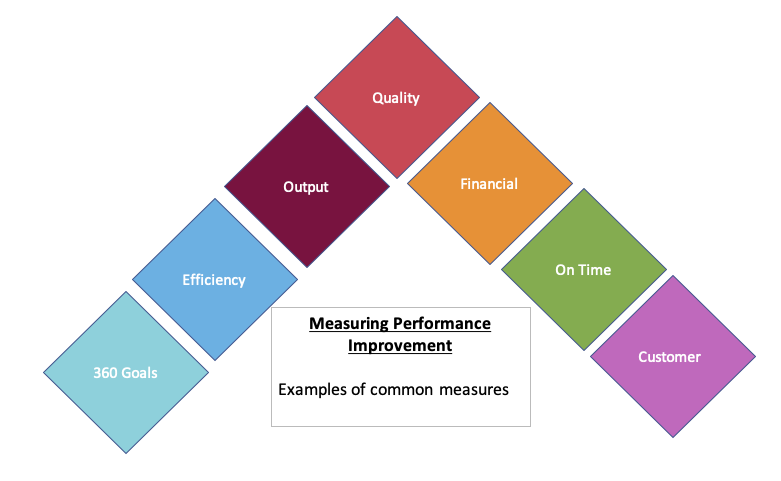Measuring performance improvement is a business strategy that involves analyzing the effect of changes made to business activities (such as processes, policies, organization and systems) in order to determine improvements achieved (such as increased production quantities, sales, customers, and improved quality).
Measuring performance improvement is critical to determining the success of continuous improvement activities.
In today’s post, we’ll be looking at measuring performance improvement; we’ll be taking a look at:
- What is performance improvement
- The role of measuring performance improvement
- What are metrics
- Performance Measurement Techniques
- Approaches to Measuring Performance
- Examples of Measuring Performance Improvement
- Benefits of measuring performance improvement
- Issues with measuring performance improvement
What Is Performance Improvement?
Performance improvement is generally focused on taking an activity (be that a process, function or other) and modifying it with the intent of driving improvement of some description.

Improvement activities usually have predefined goals targeting change from the current performance levels and raising them (often to a predefined target.)
One of the key principles of Performance improvement is knowing what your objectives are and, therefore, what good performance looks like.
Many organizations start down the road of improvement programs without really understanding targets or goals and therefore find it very challenging to understand whether or not improvements have been made. Also, just because you have a plan to deliver improvement and you carry out an activity to deliver it, it doesn’t necessarily mean that it will happen.
Improvements Projects can be small (i.e. improving the quantity of units produced in a day) or large (i.e. Organisational restructure (such as a merger), measuring performance improvement may differ depending on the sort of project being undertaken.
Performance Improvement generally involves change; part of the measuring process is to assess the impact of this change.
An example of performance improvement is preventative maintenance that, when carried out, successfully improves the performance of production equipment by reducing unnecessary downtime. The result of which can be quantitatively measured against production goals.

This activity takes a process, alters it and provides a method of quantitatively assessing the impact of change.
While improvement processes vary, the need to conduct measurement of the performance improvement does not.
Without effectively measuring performance improvement, you will be unable to determine whether the change has resulted in the desired outcome (or to what levels).
Effective performance improvement requires several characteristics
- How you measure performance
- How you determine what to change (to bring about improvement)
- How do you determine that you have generated an improvement
- How do you determine if the change is sustained
Businesses have developed a wide range of techniques to measure performance improvement; however, for many businesses, one simple challenge remains, simply tracking data does not necessarily result in change.
Leaders must recognize that performance improvement is generated by systematic processes which can be applied to underperforming areas of the business in order to optimize and advance performance.
Continuous Improvement projects (which drive improvements) will typically focus on QCD (Quality, Cost and Delivery) performance, such as
- Right first time
- Efficiency
- Downtime
- Recurrence of previous defects
- Customer returns
The result is that an organization will need to capture data that not only can describe the current performance baseline but will also describe the impact of any change made.
The role of performance improvement measurement
Measuring performance improvement typically involves comparing performance levels after a change has been made against the original performance baseline.
The results help to determine whether predicted goals have been reached and what the business impact has been
Measuring performance improvement activities is an intrinsic part of the process and should be carried out on short-term and long-term goals.
Assessment, however, is not without issues, and businesses can waste considerable effort if they are not careful.
Key challenges include:
- Access to data to support analysis.
- Tying changes in data to improvements made
- Effective methods of interpreting data
- Focus on changes made rather than spending time (and cost) on the results.
Measuring performance improvement doesn’t just result in graphs but also helps you to understand a myriad of other factors about your business, such as:
- Accountability of functions to corporate goals
- Effectiveness of company processes
- Effectiveness of internal communication
A byproduct of performance measurement is that the business is able to gain insights into what works and what doesn’t and how these factors can be applied across a business.
While some organizations tread down the path that measuring performance is the responsibility of senior management, the vast majority of organizations will try to deliver success through a culture of performance and involve the whole organization. The result is that everyone has a vested interest in being able to measure change and understand contributions made to process improvement.
Companies that measure performance improvement effectively can track progress and exercise accountability, make sure that processes or programs are executed as designed, find ways to achieve better results, effectively communicate progress and success, and understand what works and what doesn’t.
Though the processes may vary, the core methodology is almost always the same. Performance improvement is measured by
- Defining success,
- Understanding baseline performance
- Implementing change
- Measuring by using relevant key metrics,
- Learning,
- Assessing whether goals have been achieved
- Sharing knowledge throughout the organization.
What are metrics?
Clear data-led prioritized metrics that cover key aspects of the business, including productivity, organization and financial, are vital if your performance improvement activities are to be a success.
Processes and systems must be designed with performance measurement in mind making it simple to collect High-quality data that can be used to assess the effectiveness of a process.

Simply measuring data, though, is not the only part of the answer. In order to improve, we must be able to understand what the data is telling us and learn from its insights enabling us to understand ways we can become more effective.
This brings with it a fundamental problem in that the data we select to represent performance must be tied closely with improvement changes being made, or we risk misinterpreting results.
Performance Measurement Techniques
Change is often complex and Performance Measurement Techniques vary from one organization to another, often based on several characteristics such as:
- The scale of changes implemented
- The types of critical success factors (i.e. monetary, quantitive, qualitative)
- Resources used for the process
- Systems and processes that will be used to execute the task
- Available information to assess the performance
However, despite the variation, there are often some common themes; these often include:
- Understanding the purpose of measurement
- Setting goals
- Prioritizing
- Implementing meaningful measures
- Analysis
- Communication
- Implementing measures
- Understanding what the measures tell the organization
- Reporting
- Agreeing on actions
- Reaching targets
- Monitoring Sustainment
Approaches to Measuring Performance Improvement

There is a multitude of approaches available to businesses. These tend to be based around three core areas:
- Personal
- Functional
- Organizational
Examples of measuring performance improvement

Employee performance:
- Performance goals, i.e. number of sales
- Training Goals
- Efficiency
- 360 feedback
Functional/Departmental
- Number of units produced by core processes (i.e. Product, Purchase Orders, Customer contacts etc.)
- Right first time (How many units are of the right quality when first produced)
- 360 feedback (from other functions)
- On-time delivery
Organizational goals and metrics
- Financial performance
- Staff attrition
- Customer feedback
- Market Share
- Efficiency
Benefits of measuring performance Improvement
Measuring performance improvement offers significant business benefits:
- It helps understand if business goals have been achieved.
- Provides factual information on the returns of improvement projects
- Provides a method of communicating performance to the business
- Helps highlight performance trends
- Aids business decision making
Issues With Measuring Performance Improvement
Measuring performance improvement is not without its issues, which are as follows:
1. Poor quality information/data unable to adequately describe levels of performance
2. No Goals or Targets set
3. The methods for measuring performance improvement are complex, leading to incorrect analysis
4 Inadequate baseline data rendering impact of change difficult to determine
5 Leadership is more focused on supporting method of change than how it will be measured, leading to challenges emerging
6. Complex measures are difficult for the organization to understand and utilize
Summary
The significance of performance measurement can be challenging to explain, especially when, traditionally, the focus is on the problem faced and the changes required.
However, as we’ve described measuring performance improvement is an intrinsic part of any continuous improvement activity.
It’s important to remember that this activity is not free, there will be a cost associated with it, and it will require adequate resourcing (both with people and tools).
Effective performance measurement enables organizations to pinpoint strengths and weaknesses within processes and helps establish performance baselines, and provides the whole organization quantitive feedback that it can act upon.
If you’ve supported your organization with measuring performance improvement, we’d love to hear about your lessons learned and any feedback you might have.
You can reach us on Twitter or via the comments section below.
